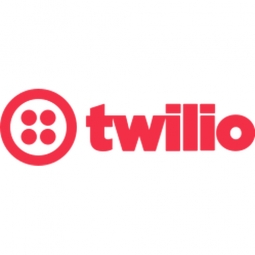Technology Category
- Application Infrastructure & Middleware - Database Management & Storage
- Infrastructure as a Service (IaaS) - Cloud Storage Services
Applicable Industries
- Buildings
- Telecommunications
Applicable Functions
- Facility Management
- Sales & Marketing
Use Cases
- Building Automation & Control
- Time Sensitive Networking
Services
- System Integration
- Testing & Certification
About The Customer
SpareFoot is a marketplace for renting self-storage units, founded in 2008 and headquartered in Austin, Texas. The company initially operated as a peer-to-peer storage rental service. However, upon recognizing the struggles of storage facilities to find customers, co-founders Chuck Gordon and Mario Feghali shifted the business model to focus on connecting people looking for storage with storage operators. Today, SpareFoot is the world's largest online marketplace for self-storage, providing storage operators with a powerful online presence across multiple channels, bolstered by advanced technology that helps owners manage their businesses. The company's online presence also serves customers by offering new search and comparison tools that make booking storage easier.
The Challenge
SpareFoot, a listings marketplace for self-storage units, faced the challenge of making it easier for people to find and connect with relevant self-storage facilities in their area. The self-storage industry was traditionally low-tech, with facilities relying on offline advertising methods such as Yellow Pages, billboards, and word-of-mouth to attract customers. On the other hand, customers were increasingly turning to online search engines and social networks to find storage solutions. This left storage facility owners competing with big-budget marketing firms to secure customers online. In 2009, some of the more forward-thinking storage facilities recognized the need for a better way to do business and turned to SpareFoot for help.
The Solution
SpareFoot transformed its business model to focus on a long-standing problem in the self-storage industry: connecting people looking for storage with storage operators quickly and easily. The company leveraged Twilio's communications API to empower customers to send SMS messages, handle voice calls, and automatically provision 800 numbers across the SpareFoot network. One of the earliest implementations was sending customers directions to storage facilities via text message after they reserved a storage unit online. This significantly increased the percentage of customers who moved in after making a reservation. SpareFoot also developed LILY, a Twilio-powered application that overlays local phone numbers for a storage owner's network of facilities, allowing owners to track calls through upwards of 125 marketing channels. To further improve move-in rates, SpareFoot created another Twilio-powered app called TenantConnect, which automates customer follow-ups for facilities.
Operational Impact
Quantitative Benefit

Case Study missing?
Start adding your own!
Register with your work email and create a new case study profile for your business.
Related Case Studies.

Case Study
Energy Saving & Power Monitoring System
Recently a university in Taiwan was experiencing dramatic power usage increases due to its growing number of campus buildings and students. Aiming to analyze their power consumption and increase their power efficiency across 52 buildings, the university wanted to build a power management system utilizing web-based hardware and software. With these goals in mind, they contacted Advantech to help them develop their system and provide them with the means to save energy in the years to come.

Case Study
Intelligent Building Automation System and Energy Saving Solution
One of the most difficult problems facing the world is conserving energy in buildings. However, it is not easy to have a cost-effective solution to reduce energy usage in a building. One solution for saving energy is to implement an intelligent building automation system (BAS) which can be controlled according to its schedule. In Indonesia a large university with a five floor building and 22 classrooms wanted to save the amount of energy being used.

Case Study
Powering Smart Home Automation solutions with IoT for Energy conservation
Many industry leaders that offer Smart Energy Management products & solutions face challenges including:How to build a scalable platform that can automatically scale-up to on-board ‘n’ number of Smart home devicesData security, solution availability, and reliability are the other critical factors to deal withHow to create a robust common IoT platform that handles any kind of smart devicesHow to enable data management capabilities that would help in intelligent decision-making

Case Study
Commercial Building Automation Boosts Energy Efficiency
One of the challenges to building automation is the multitude of non-interoperable communications protocols that have evolved over the years. Buildings have several islands of automation. Bridging the islands of different automation without losing the considerable investment in each specialized control network is the main focus in this solution.





